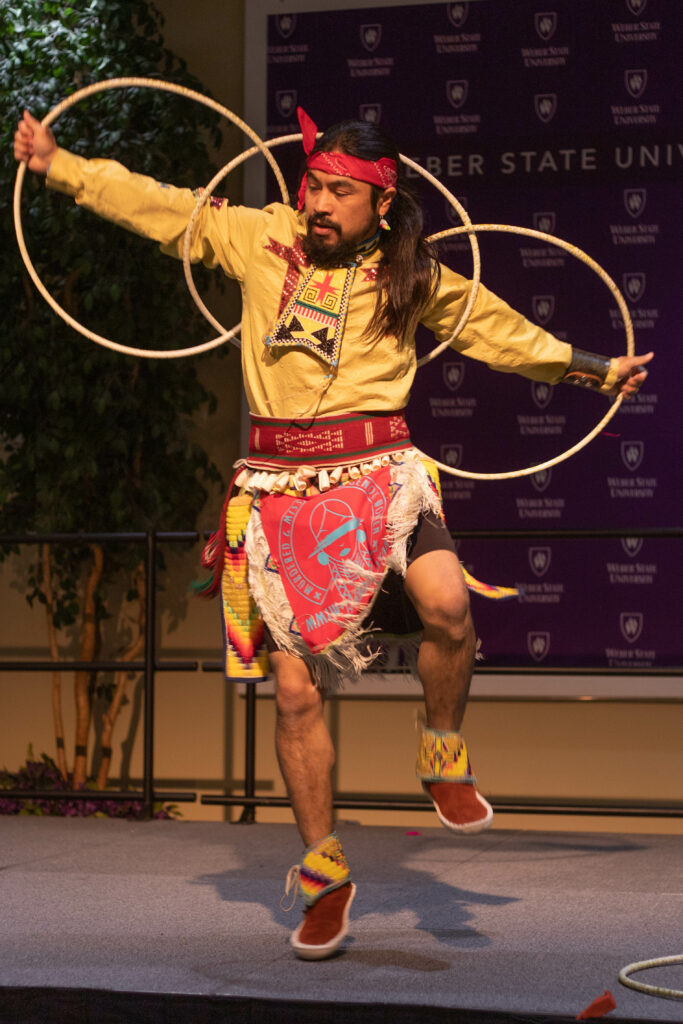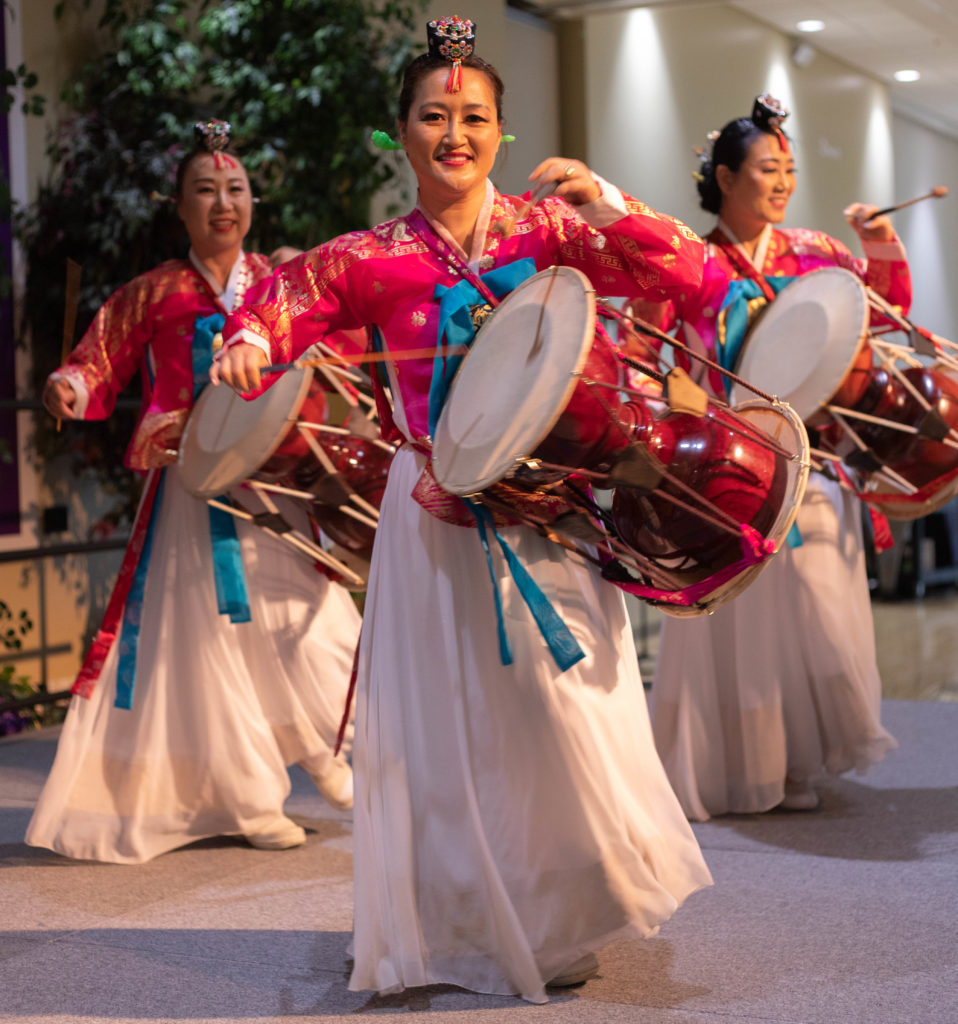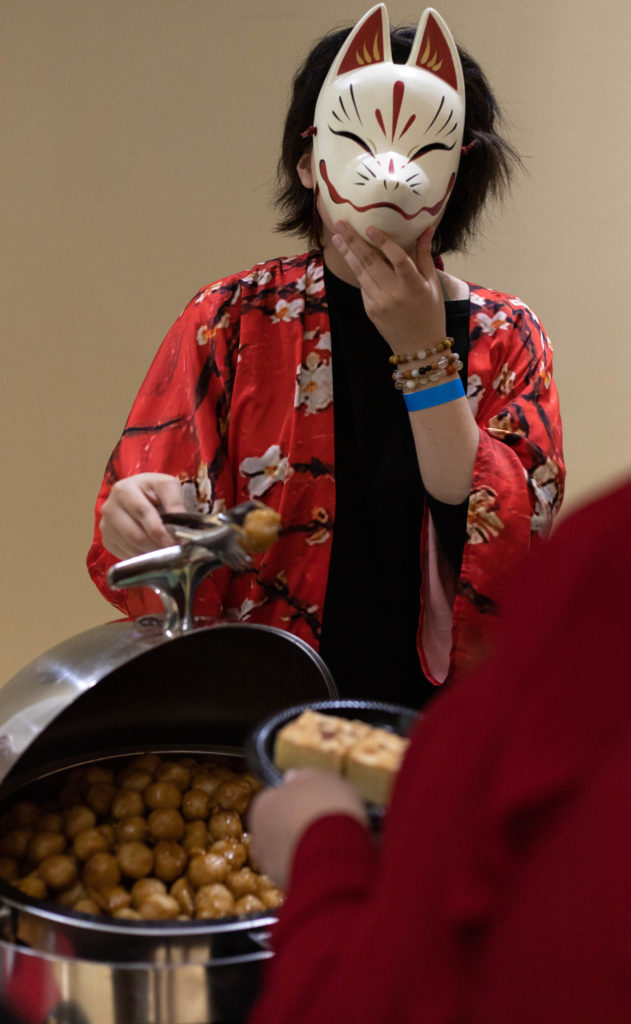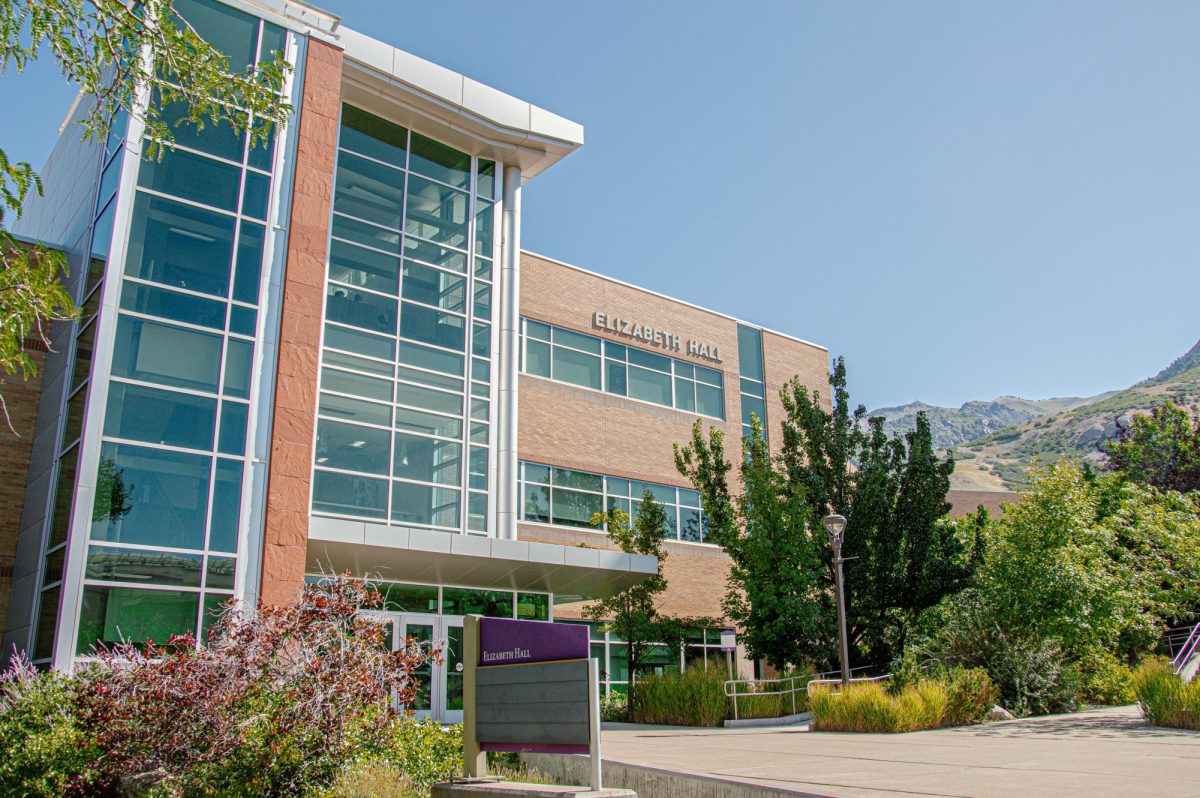Organizations, universities, work and other environments tend to say they value freedom of expression and diversity, but then turn around and tell an African-American woman her natural hair is not professional or do not provide the resources to help an individual grow and learn. Weber State is not like them.

Weber and the International Student and Scholar Center embraced cultural expression and diversity, hosting the International Student Banquet on March 23 in the Shepherd Union Ballrooms.
Besides teaching WSU students, faculty and the Ogden community about a myriad of cultures and their traditions, attire and cuisine, the ISSC had a goal to raise $27,000 for an international student scholarship. Money raised would go toward a year of one international student’s tuition, mandatory health insurance and living expenses.

During the 2018 school year, Weber was home to 348 international students representing 59 foreign countries, according to WSU Reports and Publications.
Various cultures believe it takes an entire community’s involvement to raise and educate a child. International students leave the community they know, go to unfamiliar territory and face uncertainties that domestic students do not have to think about.
According to the WSU undergraduate cost estimate for 2018, a nonresident will pay a yearly total of $26,480. This amount includes $15,260 in tuition and $8,400 in room and board.
Chukwuebuka Odu, WSU international student senator, said every year he has attended WSU, naira — Nigerian currency — has gone up. Students cannot control currency inflation occurring in their countries, and they live with the anxiety of not being to afford their education.
“Weber State is trying to make sure that a student will not have to go back home because they cannot provide for their education,” Odu said. “The international office is trying to see if there’s a way to help a student that is doing well in their education, but they cannot afford it anymore.”
John Simmons, a WSU student who adopted Russian children, said three-fourths of Russian boys in Soviet orphanages would become criminals and two-thirds of girls would turn to prostitution. Only one out of 10 of these children would get a job and contribute to society.
“For one of 10 of these children, the resources and mentors are there,” Simmons said. “When those resources aren’t there, these children often decide that their beliefs are wrong and their faith in humanity was unjustified, and they decide they can no longer live in a world like this.”
Simmons said WSU and the ISSC help students who have worked hard their whole life but cannot show it through SAT or ACT scores. The international student program, according to Simmons, has reached out to at-risk students and encouraged them to attend WSU. The institution provides an English-as-a-second-language program.
“We can’t allow people who put in an effort to continue to fail,” Simmons said.
When not discussing scholarships and the hardships international students face, attendees celebrated and grasped a deeper understanding of the countries and cultures students came from.
International students served attendees food from their native countries. Dishes included Colombian cheese arepas, Japanese tofu yaki udon, Korean bulgogi and kimchi and Saudi Arabian lamb kabsa.

While dining, attendees watched cultural performances from various countries.
UT-ARIRANG Korean Traditional Dance Team consists of seven amatuer Korean folk dancers. The team organizer assembled the group in 2013 to spend quality time with friends, build relationships through dance and promote traditional Korean culture to Utahns.
The team performed Buchaechum, a Korean fan dance. The traditional dance derived from ancient rituals thousands of years ago. The dance is seen as a worship ceremony to the gods of Korean Shamanism.
Katie Sheen Abbott, Jake Abbott, Julie Sheen and Sandy Meek have brought traditional and modern flamenco across Utah for the past three years through dance and instrumentation. Sheen Abbott recently lived in Spain, studying flamenco from masters. The group currently teaches dance to people ranging from ages 4 to 74, instilling technique, rhythm and culture within their students.
Accompanied by Abbott and Meek on guitar and Sheen on cajón, a box-shaped percussion instrument, Sheen Abbott’s black and purple ruffled dress flowed as she performed intricate hand, arm and body movements.
Divya Narayanan, a triple scholar recipient for traditional Indian classical dances, performed a classical and Bollywood dance. She has over 25 years of experience performing, choreographing and teaching.
Wearing traditional clothing from their native countries, students closed the banquet with a fashion show.
Representing Jalisco, Mexico, students donned escaramuza dresses. These dresses consist of ribbons, long skirts, large ruffles and vivid colors. Students from Saudi Arabia wore thobes, a long, ankle-length, robe-like, white garment. Korean students wore a hanbok, a dress made of a slim top and wide bottom aimed to flatter the wearer by hiding the movements of the lower body.
WSU President Brad Mortensen said he was looking forward to next year’s international banquet already and thanked students for sharing their culture with banquet attendees.
“When folks ask me what has impressed me most in the time I’ve been president, I honestly tell them that I’m overwhelmed by the power of our international community here at Weber State, both with our students who have come from all over the world and the work that our faculty is doing around the world,” Mortensen said.
Keila Rios, an Ogden High School student, attended the event with her family. Rios said she enjoys learning about people’s perspective of the world and thought the banquet would be an opportunity to educate people and empower minorities.
“We still have a mentality that the white man is up there,” Rios said. “Any other color is looked as second class. This program helps us open our minds and be better.”
With the creation of the international student scholarship and the continuance of the banquet, WSU and the ISSC attempt to aid a student financially and seek to share the stories and cultures of its students.
“This is exposure for the community for them to understand that they’re not the only one on Earth there are other cultures,” Odu said. “It’s good to expose people to things.”

















